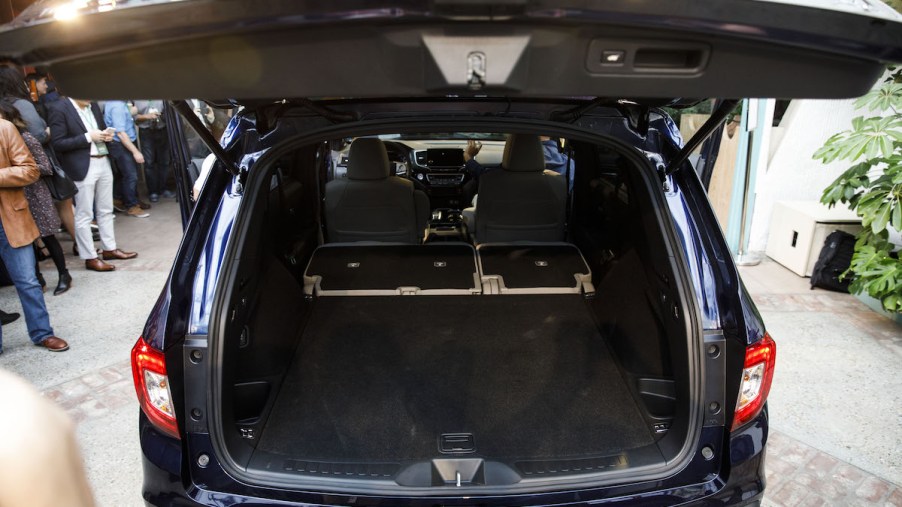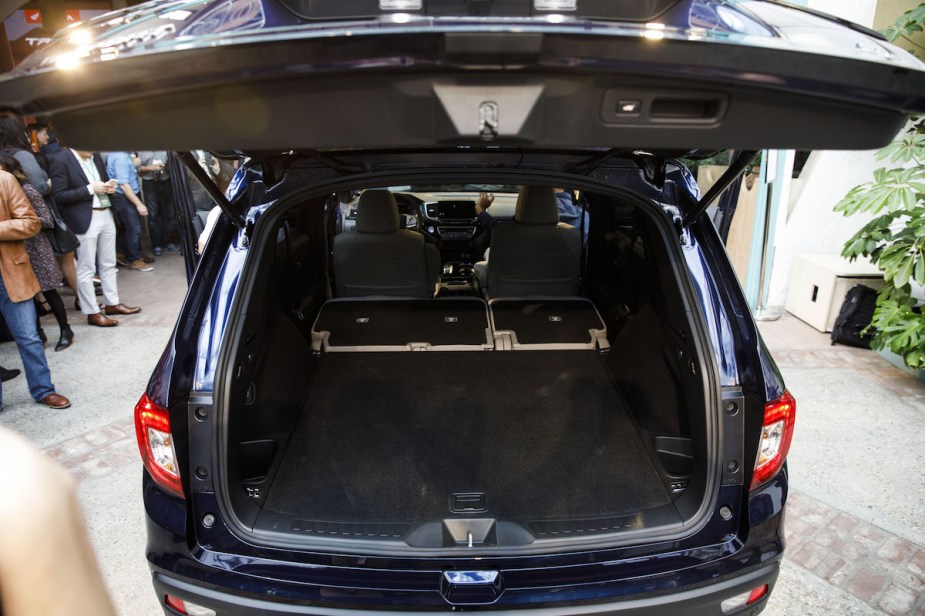
How Cargo Space Specs May Be Cheating You of the Truth of Its True Size
One of the most important specs to look for in cars is their cargo capacity, but this isn’t as simple as it may seem. Cargo capacity is measured in cubic feet (cu-ft), so car shoppers will assume that a larger cargo capacity means the car has more cargo space, but it may not actually be the case. Here’s a look at how cargo space specs may be cheating you about the truth of how much cargo space the car really has.
Why knowing how much cargo space you have is important
A car’s cargo capacity is critical, but it’s also hard for the average person to understand. For example, if someone buys a powerful sports car, they can check their gauges to see how fast they’re going. On the other hand, it isn’t easy to actually measure a car’s cargo capacity. Sometimes, owners will overestimate their car’s cargo area, and that’s where the problems begin.
One such instance is when someone buys a big TV and tries to fit it into their car. But the car is too small. The driver will then, unfortunately, prepare to do something dangerous, or maybe they are lucky enough to have the option of delivering their TV. Scenarios like that are why it’s essential to know exactly how much cargo space your car has.
The cargo space specs that get tossed around may be inaccurate

According to Cars, the main reason a car’s cargo space specs may be inaccurate comes down to how that space is measured. In theory, cargo volume is just math by multiplying the length by width and height. How that’s being measured is a different story. Most automakers use the SAE J1100 Motor Vehicle Dimensions standard.
The problem is that there are several versions of the SAE J1100, and different automakers use different versions. For example, Toyota is still using the 1975 version of those standards, while Chrysler, GM, and Ford are using the 2009 version. These standards share similarities, but the differences can pay dividends.
An example of that comes from the Acura MDX, according to Cars. The MDX was redesigned for the 2014 model year. It gained cargo capacity despite being shorter and thinner than before. As it turns out, the MDX’s 90.9 cu-ft of cargo capacity was actually closer to 68.4 cu-ft, and that difference boiled down to Acura using different versions of the SAE J1100.
Another area of concern is sedans versus everything else. The cargo space of a sedan’s trunk is measured differently. This is because a trunk is enclosed, while a hatchback or SUV will have an open cargo area. In theory, a hatchback will have more cargo capacity than a sedan, but that extra capacity comes from stacking cargo on top of one another. That can be dangerous, so there’s usually a limit to how high things are stacked.
How to properly measure a car’s cargo capacity
The easiest solution to this problem is to have all automakers use the same version of the SAE J1100 standard. It’s not legally required right now, so some automakers use different standards to make their cars look better.
A more complex solution will involve owners measuring things themselves. The easiest way is to try it out. Many folks buy groceries in bulk, and if their car’s cargo area can’t handle a big batch of groceries, it probably doesn’t have enough space. Alternatively, owners can use suitcases to get an idea of how much cargo space their car actually has.


